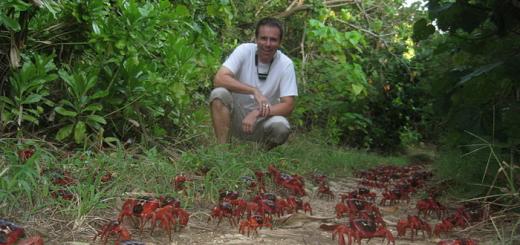Mankind consumes sugar in all its manifestations, without even thinking about what kind of "sugar" his body needs. We eat cereals, pasta, flour and chocolate, fruits, both ours and exotic, without realizing how much we need this very "fuel".
What is sugar, do we need it or not, and what

We present all the most interesting facts about sugar about this wonderful "gasoline" for a person.

A bit of history
Sugar in the common people, and sucrose - in a scientific way, came from India thanks to the Egyptians. They were such "intermediaries" between India and Europe. In Russia, he appeared in the XI-XII centuries. Then only the prince and nobles could "taste" it. Domestic production began to improve in 1809 thanks to our own raw materials - beets.

Varieties
Popular beet sugar or refined white is present in the life of each of us thanks to Napoleon, who since 1806 was able to create a "fruitful" and solid ground for its production.
Cane sugar until the 19th century was an item of luxury and wealth. And the development as such, he received thanks to Columbus, who carefully transferred this plant of "chicness" to Haiti from the Canary Islands. This culture had enormous opportunities even then to satisfy the population of Europe.

Brown sugar, which is gaining more and more popularity every day, is actually more high-calorie and has a lot of impurities. This is the same cane sugar, only unrefined.

Here are some more interesting facts about sugar
- thanks to the cultivation of cane in Suriname, New York came into the possession of Britain in 1674.
- about 1 million slaves from the African continent were brought by Europeans to the plantations of Jamaica and Barbados to harvest cane from 1701 to 1810.
- Tsar Peter I issued a decree to produce sugar in 1718.
- In the 18th century, the German chemist Markgraf brought sugar to the state of "solid".
- in the 19th century, Russians paid 3 rubles for a pound of sugar, despite the fact that a piece of beef was 2 kopecks, and a chicken cost 5 kopecks.

And finally
Of course, everything has changed since the 19th century, not to mention what happened before. Sugar has become extremely popular, businessmen make huge money on this production, and the consumer always has something to choose from on store shelves.

Be careful when buying this or that type of sugar, and then everything "eaten" will only benefit you. It was written about the beneficial properties of sugar.
For facts about the harmful effects of sugar on the human body, see this video. Or in the player below.
03.01.2012
Interesting unknown facts about sugar:
1. The average American eats 61 pounds Sahara per year, of which 25 pounds in sweets. On Halloween, 2 pounds are eaten.
2. Because of Sahara wrinkles can form during glycation when elevated levels Sahara in the blood, it binds to collagen in the skin, making it less elastic.
3. Reduce consumption Sahara can help the skin regain elasticity.
4. Made in India sugar from reed for 2000 years. Alexander the Great and his army marveled at the production of honey without Sahara.
5. In 1747, the German chemist Andreas Markgraf discovered that sugar in sugar beet is identical sugar in sugar cane. In 1802, the first factory for the production of Sahara from beets, which made it possible to supply cheap sugar to the northern regions.
6. Over 8.4 million metric tons Sahara, produced annually in the United States, is obtained from sugar beets.
7. You can eat 16 cubes Sahara at once? You must have done it. That's a little less than a 20-ounce bottle of cola.
8. Drinks with artificial sweeteners help you gain weight. The study determined that rats that consumed liquid with artificial sweeteners received more calories than rats that consumed liquid with no sweeteners. Sahara.
9. Saccharin and aspartame were created by chance when scientists were doing research unrelated to sweeteners, tasting a test sample and they liked the taste.
10. Which scientist puts test samples in his mouth? They had an excuse. The scientists who discovered sucralose were trying to create an insect repellent. The assistant thought he was being asked to sample the sample, not to test it.
11. The substance lugdunam is the sweetest, 200,000 times sweeter than table Sahara.
12. Sugar are molecules of carbohydrates, hydrogen and oxygen. The simplest include glucose, fructose and galactose. Canteen sugar is a crystallized sucrose, a mixture of fructose and glucose molecules.
13. Sugars are the building blocks of carbohydrates, the largest type of organic molecules in living things.
14. Glycolaldehyde - an eight-atom sugar, was discovered in a cloud of interstellar gas near the center of the Milky Way. Glycolaldehyde can react with tricarboxylic sugar and form ribose, the backbone of RNA and DNA, so that it could be the chemical precursor of life on Earth.
This cloud also contains ethylene glycol, the sweet relative of glycolaldehyde and the main ingredient in antifreeze. Either complex sugars can be produced in interstellar space, or there is some point in the universe for their production. Sugar can help determine this. Burn sucrose with corn syrup and saltpeter and you've got "sugar fuel," amateur rocket fuel.
Gulnara based on Discovermagazine materials
And much more than the WHO and the American Heart Association recommend: 6 teaspoons a day for women and 9 for men. On average, a person eats four times more, about 70 kilograms per year. Where do you think? The thing is that there is a so-called hidden sugar, and it is in almost all types of store products - sausages, bread, pasta, sauces. Such sugar has little nutritional value, but a lot of extra calories.
Fact two: sugar is not only sweet In science, sugar is any kind of carbohydrate. Whereas in the people this concept means, as a rule, only one of all varieties of carbohydrates - sweet. It's called sucrose.
Fact three: a gram of sugar is only a quarter of a teaspoon And not a spoon with a slide at all, as many people think (and are mistaken). So when you stir a spoonful of sugar in a cup of coffee, know that now you "take" half of your daily allowance!
Fact four: sugar ... useful Yes, yes. Useful. But in reasonable volumes (the same 6-9 teaspoons). Moreover, without sugar, a person will not last long. Sweet sugar, as mentioned above, is sucrose. And it, in turn, consists of fructose and glucose, one of the main sources of energy for humans. Therefore, giving up sugar is completely harmful to the body. When we consume glucose, it stimulates the release of serotonin, which affects a person's mood, sexual function, sleep, memory, learning, and also appetite. No wonder sweet things make us feel so good.
Fact five: many "harmless" drinks are actually full of sugar Fruit juices, sports drinks, energy drinks, and so on, surprisingly, are at the top of the list of products in terms of sugar content. A recent study showed that drinking two of these drinks a day increased the risk of obesity and visceral fat by 26% compared to those who limit themselves to sugary liquids.
Fact six: Corn syrup is not the best sugar substitute Corn syrup is found in many foods. It is believed that this is a good sucrose changer. However, it is chemically and nutritionally identical to white sugar (that is, zero utility), but both have a high calorie content. Corn syrup is much sweeter than sugar, so it is added to all sorts of foods. Another reason why it is used in many foods and drinks is that it can be easily mixed as a syrup with different formulations.
Fact seven A: Not all sweeteners are vegetable Asparkame, sucralose, neotame, stevia. Many people think that all of these four most famous vegetable sweeteners. This is not true. Only stevia is vegetable. It is produced in different forms (granules, syrup, etc.), but in any case, it is a product from the leaves of a plant called stevia. This sweetener can be up to 300 times sweeter than regular sugar, yet has zero calories. True, sometimes stevia sweeteners can leave a bitter aftertaste.
Fact eight: "-ose" does not necessarily mean bad sugar The "ose" suffix at the end of a word (galactose, sucrose, sucralose) indicates some type of sugar. But not necessarily for table sugar, that is, harmful. Sucrose, for example, is the sugar found in highest concentration in sugar cane and sugar beets. Lactose is the natural sugar in milk. Sucralose is an artificial sweetener.
Fact nine: "Zero Calories" Doesn't Mean No Sugar Beverages labeled with this label actually contain fewer calories by reducing sugar. However, a substitute is used instead, that's the whole trick. Plus the rest, sometimes not harmless, components, as the World Health Organization constantly reminds. According to its experts, such drinks are one of the factors in the development of many global diseases.
Fact ten: Brazil is number one in the world in sugar production And not China or India at all. Brazil is the world's leading sugar producer, and the country's crop is exported to more than 100 other countries.
Fact eleven: diabetes does not cause diabetes There is no direct connection between the first and second. Diabetes is more often caused by a genetic predisposition, lifestyle, something else ... However, there is an indirect connection - being overweight and eating a high-calorie diet, which often includes a lot of added sugar, can increase the risk of developing diabetes second type.
- according to available data, the average Russian consumes 91 g of sugar per day, a resident of Switzerland - 117 g, and an American - about 212 g;
- at the moment, 59% of all sugar in the world is produced from cane, 41% from beets;
- The Czechs were the first to come up with the idea of ramming sugar into cubes (the idea first appeared in 1843). On this occasion, in the Czech Republic, a monument to refined sugar was erected on the site of a sugar factory;
- sugar is present in the fibers of all plants, because. is a component of photosynthesis;
- scientists published statistics on sugar consumption per year in Europe per person. So, in the 1850s, a person ate about 1.8 - 2 kg of sugar per year, in the 1920s the amount of sugar consumed increased to an average of 17 kg, in the 2000s the figure rose to 37 kg;
- Brazil is the world's largest sugar producer in 2011. India occupied the second place, the European Union and China took the third and fourth positions, respectively;
- conducting experiments on rats, scientists were able to establish that eating sugar leads to addiction, while the changes that occur in the brain are similar to those that occur when using nicotine, cocaine or morphine;
- Lugdunam can replace sugar - it is 300,000 times sweeter. 1 crystal of this substance is equivalent to 1 teaspoon of sugar;
- According to the UN Food and Agriculture Organization, sugar cane is the most productive crop. In 2011, 168 million tons of sugar were produced from it worldwide;
- according to the results of studies, scientists concluded that the daily intake of sugar for women is 4 teaspoons, men are entitled to 6 per day, and children only 1 tsp;
- Dates contain the largest amount of sugar among vegetables and fruits - 33.68 grams of white matter per 100 grams of the product. Following with a significant difference is exotic jackfruit - 9.48 grams, in third place is sultana grapes with 7.2 grams of sugar;
- scientists have found that addiction and cravings for sweets can be hereditary;
- sugar is actively used in the manufacture of plastic, leather dressing, in the pharmaceutical, tobacco and other non-food industries;
- the lethal dose of sugar for humans is 700 grams;
- industrially produced sugar and sucrose naturally found in foods make no difference to the body;
- brown sugar is richer in minerals and vitamins than granulated sugar;
- It has been proven that if you completely abandon sugar, the body will not suffer in any way. A person consumes a sufficient norm of glucose in the form of vegetables and fruits.
- The main sources of sugar are sugar cane and sugar beets.
- Sugar cane stalks can reach a height of 9 meters.
- In ancient times, one of the provinces of India, Bengal, was called the "Land of Sugar".
- The chemical formula of sugar is C12H22O11.
- He first described sugar in 327 BC. e. Greek historian Onesikrit, who accompanied Alexander the Great on his Indian campaign: "In India, reeds give honey without bees."
- When Alexander the Great brought cane sugar from his Indian campaigns to Greece, he was immediately nicknamed "Indian salt".
- Christopher Columbus brought sugar to the New World in 1493 during his second voyage.
- When the cultivation of sugar cane in the New World began to bring tangible income, these territories acquired the status of real gold mines. So in 1674, Holland gave New York (formerly New Amsterdam) to England for cane plantations in Suriname, and in 1763, France bargained with Britain to return Guadeloupe, in exchange offering to take all of Canada.
- Up until the late 1700s, when sugar was considered a luxury, it was referred to as "white gold".
- From 1701 to 1810, about a million slaves from Africa were brought to Jamaica and Barbados alone to work on the sugarcane plantations.
- The world's first sugar beet factory was built by the German Achard in Kunern (Lower Silesia, now the territory of Poland) in 1801 at the direction of the king, who allocated the necessary funds in 1800.
- In Russia, the first document related to the development of its own sugar production is the decree of Peter I, signed by him on March 14, 1718. In particular, it contained instructions “to the Moscow merchant Pavel Vestov in Moscow to start a sugar factory with his own money and to invite him to that campaign, whomever he wants, for which and give him a privilege from the Manufactory Board for ten years and for this factory to take him out of over the seas raw sugar, and in Moscow from that boil head sugar and sell freely.
- The first plant for the production of sugar from sugar beets (beet sugar-alcohol plant) in Russia began operating in November 1802 in the village of Alyabyevo, Chernsky district, Tula province.
- Refined sugar in the form of cubes was invented in 1843 in the Czech Republic. Its inventor was the Swiss Jacob Christoph Rad, the manager of a sugar factory in Dačice, Czech Republic.
- Refined sugar (cube 1cm) completely dissolves in a glass of 60 °C water within 11-24 seconds without stirring the water.
- It is believed that Benjamin Eisenstadt (1906-1996), the owner of a coffee shop in New York, invented sugar bags to somehow optimize the use of sugar at the tables. However, not having time to patent the invention, he shared his idea with manufacturing companies that immediately seized on this idea. True, people use bags of sugar not at all the way the inventor intended.
- Sugar is a natural preservative that prevents food spoilage, and besides, it is widely used in industry and not only food.
- In some countries (India and Brazil), cars are filled with fuel obtained from sugar beets.
- Some fruits can produce their own sugar, for example, in ripened bananas, the sugar comes from the breakdown of starch, making bananas sweeter.
- Sugar is an important source of carbohydrates, the main source of energy for the human body.
- Lemon contains more sugar than strawberries.
- In 1747, the German chemist Markgraf discovered that the sugar in sugar beet is identical to that in sugar cane.
- The amount of sugar in 500 ml of Coca-Cola is equivalent to 16 sugar cubes.
- Artificial sweeteners - aspartame (E951) and saccharin - were obtained by accident. The first in the process of oxidation of 2-toluenesulfonamide, and the second - in the course of experiments to obtain a cure for ulcers.
- The strongest sugar substitute, lugduname, is almost 300,000 times sweeter than sugar.
- One type of sugar, glycolaldehyde, has been found in interstellar dust billions of kilometers from our planet.
- Model rocket scientists use a mixture of glucose, corn syrup, and saltpeter as rocket fuel.
- In the USA, an interesting medicine is produced in tablets called Obecalp (a placebo, if you read its name backwards), the main component of which is sugar, such tablets are prescribed to children with minor health complaints.
- By the way, initially in Europe, sugar was considered a medicine and was sold in pharmacies.
- Eating too much sugar can lead to wrinkles due to the fact that sugar is deposited in the collagen of the skin, which makes it less elastic.
- On May 13, 1920, at a conference of dentists in Manchester, sucrose was first named as the main cause of dental disease that causes caries.
- More than 110 million tons of sugar are produced annually: 60% from sugar cane and 40% from sugar beets.
- The world's largest sugar beet processing plant is located in France.
- According to the International Sugar Organization, sugar production in 2012 will exceed demand by 5.9 million tons.
- The main sugar producers are Brazil, India, the European Union, China and Thailand.
- Brazil is the largest exporter of sugar.
- The highest per capita consumption of sugar is in Brazil.
- The largest importers of sugar are the European Union, the United States and Indonesia.
- Yellow sugar is considered much healthier than white sugar. It absorbs faster and is considered an elite strain in the US and Japan.
- Over the past 20 years, human consumption of sugar has increased to 40 kilograms per year, it is part of most foods (bread, butter, condiments, sauces, etc.).
- Experts believe that a healthy dose of sugar per day for a woman can contain up to 100 kcal, or about 4 teaspoons of sugar, and for a man, 150 kcal, or about 6 teaspoons of sugar. And for a child - 1 teaspoon. This amount includes all sugars consumed, including those found in confectionery and sweetened foods and drinks.










